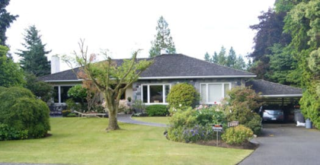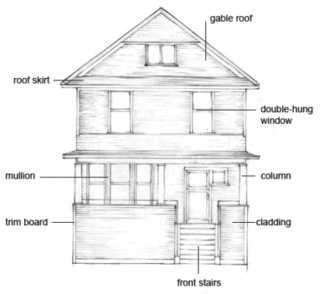VHF has gathered information below to help users navigate the Vancouver House Styles webtool. You can find tips and tricks to help identify the style of your home, as well as common questions about heritage architecture in the city.
If you have a question that is not answered below, feel free to get in touch with the VHF office by phone Monday to Friday 9am to 5pm, or by email.

FAQ
-
How do I identify the style of my home?
The major form of a house is a good place to start when you are trying to identify its style. The shape of key features such as the roof can be a useful clue. In the Vancouver House Styles webtool, you can select roof styles to see examples of the Vancouver house styles that use them.
Once you identify the type of roof, the shape of a house and number of stories are other helpful style elements to explore. Other features such as materials, the presence or absence of a porch, and types of windows offer more ways to distinguish types.
-
Major features that can help identify the style of your house include:
- Roof style (front-gabled, side-gabled, hipped, etc.)
- Arrangement of windows and doors
- Basic building shape
- Dormer style and location
- Porch style
- Type of windows (double-hung, casement, paired, etc.)
- Materials
- Decoration
-
My house doesn’t look exactly like any of these styles, what do I do?
In Vancouver there are few ‘pure’ examples of styles. Builders and architects have drawn from many sources of inspiration, and over the years houses have often been changed to fit the needs of the people living there. Updates may have mixed styles of windows, cladding and even shape of a home. In these cases, identification can be based on the building’s main characteristics, even if not all features match exactly. This is one reason why looking at features like roof style and form of a building are good places to start.
Even well-conserved heritage buildings can be hybrids. For example, Craftsman style bungalows with Edwardian integral porches are not uncommon in Vancouver. Buildings may also be eclectic designs with such a mix of features that it is not possible to assign them to a single style.
-
What does it mean if the materials of my home do not resemble those described?
In many cases, the materials of older homes have changed alongside technology. In most cases, the materials described in the webtool are those with which a style would have been initially constructed, so if the materials of your home do not match the list, it is possible an earlier homeowner updated them with the innovations of the time. In early decades, roofs were covered with cedar shingles but often replaced or laid over with asphalt shingles from the 1920s onward. Homeowners also often added later materials such as stucco or metal siding over original cladding, disguising the original appearance. Windows may also have been modified over the years, replacing wood double-hung units with metal or vinyl casements or other styles.
-
Why isn’t ____ style listed here?
Styles included in the Vancouver House Styles webtool are limited to those found in Vancouver. Since most homes in the city were built after the Great Fire of Vancouver in 1886, older styles that might be seen elsewhere in British Columbia are not included. It is possible that there are not enough good examples to make a certain style a useful category. Some styles may also be missing because they are not a type of domestic architecture. Commercial or apartment building styles are not included in the guide at this time.
-
Will you add ____?
Possibly! Although other styles may be added, it is an ongoing process. Feel free to send us suggestions if you have a style you would like to see. The original styles were selected by a team of experienced heritage professionals and architects for their ubiquity or significance in the city of Vancouver. Additional styles were added after further consultation with heritage professionals, but there may be others we can include in the future.
-
How do you distinguish Arts & Crafts houses from Tudor Revival houses?
Distinguishing when you are looking at an example of an Arts & Crafts home as opposed to Tudor Revival can be challenging. These two styles are quite similar, with steep rooflines, asymmetrical massing, and often have half-timbering. However, there are some key features to keep in mind:
Tudor Revival- Vertical orientation
- More half-timbering
- More front/cross- gables
- Massive exterior chimneys
- Less sheltering roof
Arts & Crafts
- Horizontal orientation (closer to garden)
- Less half-timbering
- Fewer front/cross-gables
- Interior chimneys
- Sheltering roof (living space under roof)
